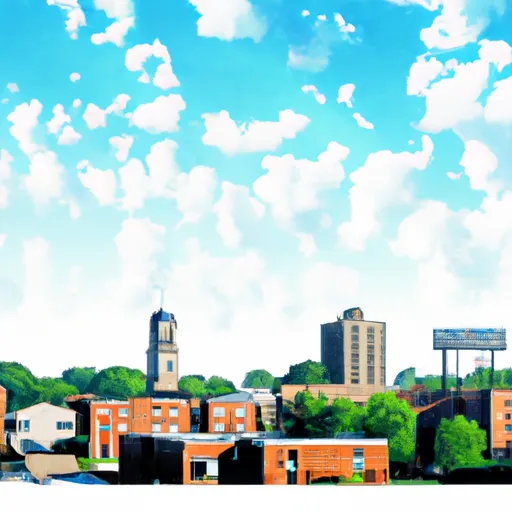-
 Snoflo Premium
Snoflo Premium
Get unlimited access to all our content
With no Ad interruptions! - Start Your Free Trial Login with existing account
Norris-City
Eden Index
Climate
8.2
•
Recreation
1.1
•
Community
2.3
•
Safeguard
4.2/10

Norris City, Illinois is a small town located in White County. The climate in Norris City is characterized by warm summers and cold winters. The average temperature in the summer months is around 85°F, while in the winter, it can drop to around 30°F. The town experiences moderate rainfall throughout the year.
As for hydrology constituents, Norris City is situated near the Little Wabash River, which provides a source of water and recreational opportunities for residents and visitors. The river is known for its fishing and boating activities.
Outdoor recreation opportunities in Norris City include exploring the nearby Shawnee National Forest, where visitors can enjoy hiking, camping, and wildlife watching. The forest features numerous trails and scenic spots, such as Garden of the Gods and Rim Rock, offering breathtaking views of the surrounding landscape.
What is the Eden Index?
The Snoflo Eden Index serves as a comprehensive rating system for regions, evaluating their desirability through a holistic assessment of climate health, outdoor recreation opportunities, and natural disaster risk, acknowledging the profound impact of these factors on livability and well-being.
Climate Health Indicator (CHI): 8.2
Norris-City receives approximately
1165mm of rain per year,
with humidity levels near 82%
and air temperatures averaging around
14°C.
Norris-City has a plant hardyness factor of
6, meaning
plants and agriculture in this region thrive during a short period during spring and early summer. Most
plants will die off during the colder winter months.
By considering the ideal temperature range, reliable water supplies, clean air, and stable seasonal rain or snowpacks, the Climate Health Indicator (CHI) underscores the significance of a healthy climate as the foundation for quality living.
A healthy climate is paramount for ensuring a high quality of life and livability in a region, fostering both physical well-being and environmental harmony. This can be characterized by ideal temperatures, reliable access to water supplies, clean air, and consistent seasonal rain or snowpacks.
Weather Forecast
Streamflow Conditions
Lower Ohio
Area Rivers
Lower Ohio
Snowpack Depths
Lower Ohio
Reservoir Storage Capacity
Lower Ohio
Groundwater Levels
Recreational Opportunity Index (ROI): 1.1
The Recreational Opportunity Index (ROI) recognizes the value of outdoor recreational options, such as parks, hiking trails, camping sites, and fishing spots, while acknowledging that climate plays a pivotal role in ensuring the comfort and consistency of these experiences.
Access to outdoor recreational opportunities, encompassing activities such as parks, hiking, camping, and fishing, is crucial for overall well-being, and the climate plays a pivotal role in enabling and enhancing these experiences, ensuring that individuals can engage in nature-based activities comfortably and consistently.
Camping Areas
| Campground | Campsites | Reservations | Toilets | Showers | Elevation |
|---|---|---|---|---|---|
| Chickasabogue Park | None | 39 ft | |||
| Service | 32 | 123 ft | |||
| Lakeview RV City Park | None | 230 ft | |||
| Bladon Springs State Park | 10 | 193 ft | |||
| Sumter Rec Area | None | 128 ft | |||
| Cochrane | None | 166 ft | |||
| Citronelle Lakeview RV Park | 24 | 226 ft | |||
| Natchez Trace State Park | 50 | 637 ft | |||
| Sam Parr State Park | 80 | 524 ft | |||
| Lenoir Landing - Coffeeville Lake | None | 52 ft |
Nearby Ski Areas
Catastrophe Safeguard Index (CSI):
The Catastrophe Safeguard Index (CSI) recognizes that natural disaster risk, encompassing floods, fires, hurricanes, and tornadoes, can drastically affect safety and the overall appeal of an area.
The level of natural disaster risk in a region significantly affects safety and the overall livability, with climate change amplifying these risks by potentially increasing the frequency and intensity of events like floods, fires, hurricanes, and tornadoes, thereby posing substantial challenges to community resilience and well-being.
Community Resilience Indicator (CRI): 2.3
The Community Resilience Indicator (CRI) recognizes that education, healthcare, and socioeconomics are crucial to the well-being of a region. The CRI acknowledges the profound impact of these elements on residents' overall quality of life. By evaluating educational resources, healthcare accessibility, and economic inclusivity, the index captures the essential aspects that contribute to a thriving community, fostering resident satisfaction, equity, and social cohesion.

